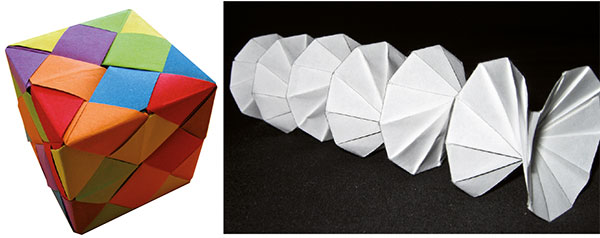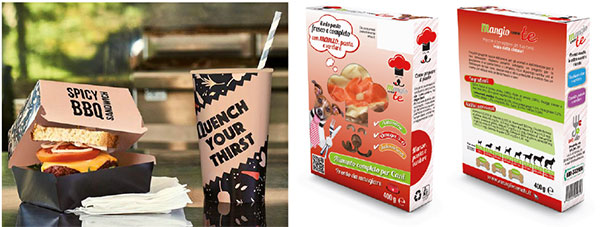Cellulosic packaging – Data 2016
Use and market trends of corrugated cardboard packaging, boxes and paperboard, large format paper bags and other cellulosic packaging types (product types taken up from “Packaging in numbers 2017”).

According to the most recent data supplied by Eurostat, the paper and converting industry in the 28 EU states is made up of 17,400 enterprises employing 482,000 workers; in 2016, the industry had a turnover of 101.7 billion euro. Production dropped during the year (-0.8%), while turnover grew by 0.3%. The top 5 countries in terms of turnover share are Germany, Italy, France, the United Kingdom and Spain. Of these, Italy holds a leading position in the manufacture of corrugated cardboard and printed packaging.
Italy: industry balance sheet
In Italy, cellulosic products account for 32% of all packaging production. According to calculations by Istituto Italiano Imballaggio in the 2017 edition of “Packaging in numbers”, production of empty cellulosic packaging amounted to 5,063 t/000, with 2.4% growth over 2015.
Exports grew by 4.3%, and imports by 14.9%, with apparent use at some 4,600 t/000 (+2.5% compared to the previous year).
Corrugated cardboard. Of total cellulosic packaging production by weight, corrugated cardboard products make up 73.4%, with a 2016 production of 3,719 t/000 (+2.7% over 2015).
Corrugated cardboard is used primarily for transport packaging, which has sustained its growth.
The rise of online sales (which increased by 10% in 2016 alone) has benefited this type.
Foreign trade has seen +6.3% imports and +2.1% exports, leading apparent use to grow by 2.8%.
According to analysis of sectors monitored by the Istituto Italiano Imballaggio database, the target areas of corrugated cardboard packaging are: food (food, beverage and produce), accounting for 28%; furniture at 12%; non-food (chemical products, electronics, construction and others) at 28%.

Boxes and solid board boxes.
Solid board is used predominantly for folding boxes (83%) and to a lesser degree to make boxes (17%).
Folding boxes can be 100% board or combined with PE film or aluminium foil for a more appealing look and to optimize performance in terms of special protection needs.
In 2016, production of folding boxes reached 769 t/000 (+0.7% compared to 2015).
The use of boxes and folding boxes breaks down as follows: 43.8% goes to food packaging, 18.3% to beverages (mainly clusters), 10.1% to cosmetics and pharmaceuticals, 27.8% to other non-food categories. Paperboard boxes are primarily used for stockings, leather and apparel.
Large format paper bags. This packaging type closed 2016 with 187,000 t produced (-1%). The performance of apparent use remains positive (+1%), sustained by a 17.6% increase in imports. Exports dropped by 4.8%. Construction has confirmed its position as the main area of use for this product type, with a 64.1% share of the market (bags used for construction materials grew in 2016 by 1%). 15.3% of these bags are used in the food sector (rice, flour, coffee and legumes), while 9.5% was used for animal feeds. The category “other” amounted to 11.1%.
Other types. This category includes a wide variety of packaging types that differ greatly from one another in type and target use: cellulose barrels, paper tubes for domestic use, wrapping paper, parchment paper, corrugated cardboard, bags and shoppers, automatic wrapping, paper sheets for apparel, labels, solid board and paperboard displays, etc.
It is estimated that in 2016, total production of this sector reached 388 t/000 (+4.7% compared to 2015).
Foreign trade also performed well: +17% imports, +14.5% exports and +2.8% apparent use.
Recycling of cellulosic packaging
According to Comieco (Italian National Consortium for Recovery and Recycling of Cellulosic Packaging), 3.2 million t of cellulosic packaging was collected in Italy in 2016. This represents 3% growth after years of stalling. The paradigm change has been driven by Southern Italy, which has managed a +8.6% increase in separate collection, followed by Central Italy with +3% and Northern Italy with +1.5%. The rate of recovery of cellulosic packaging marketed for consumption in Italy (full packaging consumed) and collected separately has been 88%. Output has also grown in quantitative terms, reaching 4.7 ktonn (+2.7% over 2015), potentially offering a positive indicator for economic recovery.
Barbara Iascone
Istituto Italiano Imballaggio

















